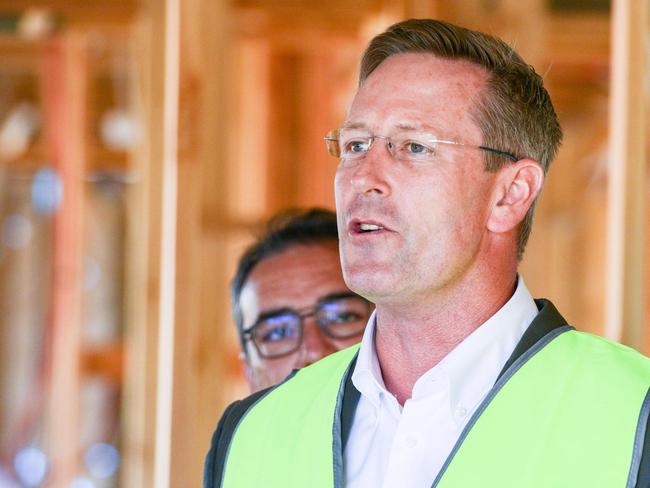Electricity prices fell in 2019-20, Essential Services Commission of SA report shows
Electricity is finally becoming cheaper in SA, the official independent data has found. But there’s still a way to go to before the Government hits its target.

SA News
Don't miss out on the headlines from SA News. Followed categories will be added to My News.
Power prices in South Australia have fallen by an average $96 a year, official estimates published on Sunday show.
The welcome cut puts the State Government heading towards a key promise at the 2016 election to reduce electricity prices by $302 a year – but still well short of target.
With 18 months to go until the next poll, government figures from the Essential Services Commission of SA’s annual analysis shows prices fell in 2019-20, with the average residential market offer at $2086 a year, down 4 per cent.
“My Government came to office promising real cost of living relief for SA households and that is precisely what we are delivering,” Premier Steven Marshall said.
Energy and Mining Minister Dan van Holst Pellekaan said prices were expected to fall further this financial year.
“With falling wholesale electricity prices set to drive down the retail price of electricity even further SA households and businesses should be actively seeking cheaper electricity from their retailer,” he said.
“There has been no better time to demand your retailer cut the price of electricity to your household or small business.”

The price cut report comes as the electricity industry faces more change with the Government forcing all new solar installations to be capable of being switched off remotely.
Opposition Leader Peter Malinauskas said the new rules ran counter to SA’s leading position in the uptake of rooftop solar and batteries.
“The industry is telling us we have a government which is rushing this process, sending confusing messages and threatening to shut down elements of the industry if they don’t get their way,” he said.
The Government’s price promise to cut prices by $302 compared to 2016-17 was based on several measures including its home battery scheme and ElectraNet building its transmission interconnector to NSW.
In 2016-17, average prices were $1976/year.
However they jumped up by $268 the following year.
Now, even though they have fallen for two consecutive years they are still $110 higher - meaning the government is $412 short of its target.
The interconnector is still in planning with forecast it could be built by 2024.
It is understood costs have increased by as much as $1bn to well in excess of $2bn but benefits to households have also increased.
The ESCOSA report also charts gas prices.
In 2016-17, the average residential gas market offer was $1004/year.
In the past year it was $1040/year up $28 on the previous year.

The biggest retailers already have announced cuts this year and the State Government is demanding retailers give consumers the opportunity to save money if they change their habits at home.
AGL will cut prices by an average 2.55 per cent, Origin by 5.6 per cent and EnergyAustralia by 2.7 per cent.
The Government is pushing ahead with making it compulsory for retailers to offer an electricity contract which takes advantage of cheap power in the middle of the day.
Following consultation in which retailers strongly opposed compulsory change, the Government has told retailers they must make offers available from late September.
The offer would be available to homes with a smart meter which records the time at which energy is used, currently in about one in five homes.
Households using appliances such as air conditioners and washing machines in the middle of the day could save several hundred dollars a year.
The change follows a new tariff structure for what SA Power Networks – which distributes energy via poles and wires – charges retailers is now being phased in.
The tariffs include a “solar sponge” between 10am and 3pm charged at 25 per cent the base rate but peaks in the morning and evening at 125 per cent.
In addition, wholesale prices charged by generators cost about five times as much in the evening than the middle of the day, according to the Australian Energy Regulator.
The regulator backed the government’s move as “a positive step in the short term”.
“Consumers in SA should have a genuine choice of retail offers, including the choice between time-of-use and flat rate retail offers, as well as innovative offers that automate their smart devices (e.g. smart electric vehicle charging),” it said.
The SA Council of Social Service said it broadly supports the changes but cautions they are being rushed and “do not give consumers time to understand the changes and effectively respond to them”.
